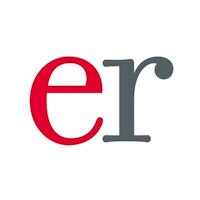Home builders turn green into gold
In an attempt to catch up with the green building movement, the industry group made the announcement on Thursday at the annual International Builders' Show in Orlando, Florida, says Kathy Price-Robinson, in her Los Angeles Times blog Pardon Our Dust.
As one NAHB member put it: "The train has left the station and we hope to be in front of it." Hmmm, "not sure that's a good analogy," says Price-Robinson, "but I know what he's trying to say."
Indeed, green housing construction is one train US builders wouldn't want to miss, and not just for the warm inner glow it gives them. As much as this movement is about sustaining the earth and its resources, it is about builders sustaining their own businesses and distinguishing new homes from existing ones in a slow market, says Amy Hoak in MarketWatch.
"Consumers are looking for differentiation in a housing market and they're looking for homes that help them respond to increases in oil, home-heating costs, electricity costs, natural-gas costs. People more than ever are watching what energy means to their bottom line," said David Rodgers, deputy assistant secretary for energy efficiency at the US Department of Energy, during a news conference.
"A lifeline out of this soft housing market is to get green. We believe we need to make green homes, green buildings as ubiquitous as American flags lining main street USA," he added.
Donna Reichle, staff vice president for media and PR at NAHB puts it another way: "People who are building green have a little bit of an edge in this down market," she tells Hoak.
"It's such a great story for an industry that right now is having its own challenges," says Deborah Jones Barrow, founder of TheDailyGreen.com. "This is being driven by the consumer."
The definition of green building is more and more being distilled into three concepts, says Price-Robinson: energy efficiency, indoor air quality, and sustainable and recycled materials. The NAHB's rating system will compete with the more stringent LEED system of the US Green Building Council – a non-profit organisation.
In order to get the green stamp from the NAHB, houses are graded on features that enhance energy efficiency, water efficiency and resource efficiency, says Hoak. Lot and site development, indoor environmental quality and the construction's global impact are also considerations. Another component is homeowner education, teaching people how to correctly operate and maintain the home to preserve its green features.
But while the availability of green building products is vastly better than it was 10 or even five years ago, builders and consumers wanting to join the revolution may still find it easiest to reach for the low-hanging fruit, says Price-Robinson.
The more-attainable, least-controversial green features include: incandescent bulbs rather than compact fluorescents, tightly insulated walls, Energy Star-rated windows and appliances, non-toxic paints, hard floor surfaces instead of carpeting, and dual-flush toilets.
"Eventually, it seems, green building will become the norm and non-green building the aberration," says Price-Robinson. Especially when the builders who have been on the cutting edge of the green movement are reporting that, "even in a terrible housing market, they are swamped with work."
"The era of bricks and sticks and put it up fast is over," said NAHB vice president Bob Jones at a press conference. "People are watching."
Green building trends, Kathy Price-Robinson, Pardon Our Dust, Los Angeles Times
Home builders turning green, Amy Hoak, MarketWatch.com
















